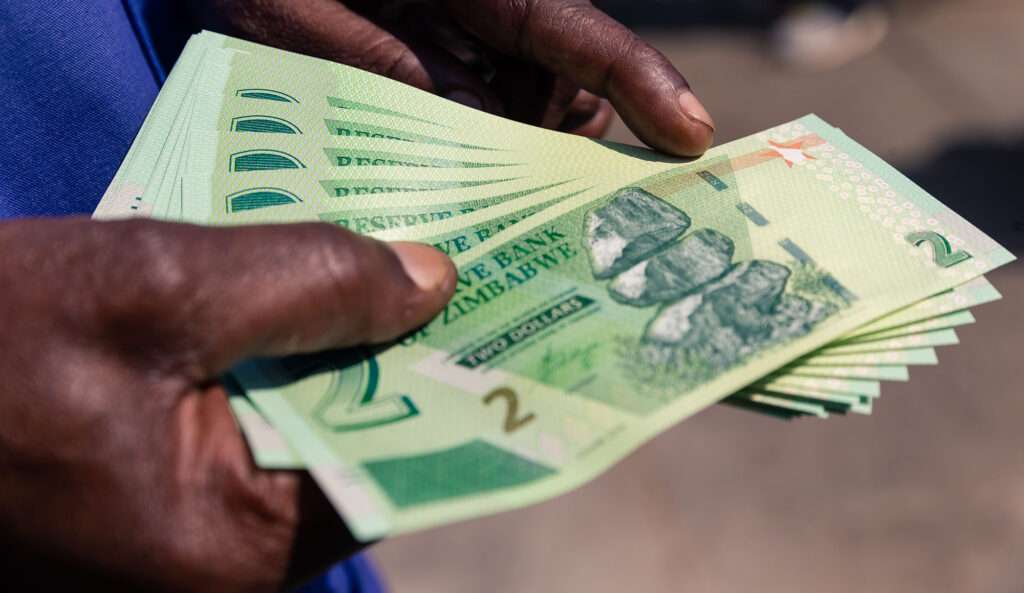Zimbabwe’s Central Bank Governor, John Mangudya has announced collaborative efforts between the central bank and the finance ministry to address the instability of the local currency.
The Zimbabwean dollar has experienced a significant decline of about 40% since the beginning of the year.
This depreciation can be attributed to high demand for foreign currency, particularly due to civil servants receiving December bonuses, as well as weakened commodity prices affecting inflows.
In response to these concerns, President Emmerson Mnangagwa recently indicated that authorities are exploring the possibility of introducing a “structured currency.”
Governor John Mangudya stated the Reserve Bank of Zimbabwe and the Treasury are collaborating on the development of the latest proposals, which will be included in an upcoming monetary policy statement.
Despite this development, a specific release date for the policy statement has not yet been announced.
However, sources familiar with the matter have indicated that potential measures under consideration include the possibility of discontinuing the weekly foreign-currency auction, which was initiated in 2020.
Other options being explored involve transferring the mandatory 25% surrender requirement for exporters to the interbank system, rather than through the central bank, and granting lenders the autonomy to establish a market-driven exchange rate.
These solutions aim to address the prevailing economic challenges and foster stability in the currency.
According to the Governor, “It’s a great reassurance that the president would like to see durable stability of prices and the exchange rate in the economy.”
“What His Excellency the President said is to provide forward guidance to the market on the thrust of the monetary policy statement that the Bank and Treasury are working on.”
John Mangudya
“Currently the economy is growing in an inflationary environment, an environment that the Bank needs to appropriately attend to,” the Governor added.
Additionally, independent economist Prosper Chitambara has expressed concerns regarding the lack of trust in the Zimbabwean dollar among the populace.
According to Chitambara, the diminishing confidence in the local currency has led to increased demand for the U.S. dollar. He emphasized that rebuilding confidence in the currency will be a gradual process and will require considerable time and effort.
The Worsening Economic Crisis Of Zimbabwe

In 2019, the government reintroduced a local currency after a decade of dollarization. However, the newly launched currency quickly lost its value, prompting authorities to reauthorize the use of foreign currencies in domestic transactions shortly after.
Since then, the local currency has experienced significant depreciation, plummeting over 40% against the dollar this year, following a staggering 90% decline in 2023. This drastic depreciation has earned it the title of the world’s worst-performing currency over this period.
Moreover, the continuous devaluation intensifies the economic challenges faced by the southern African nation, home to approximately 16 million people, and resurrects memories of the currency collapse and hyperinflation witnessed during the late 2000s.
Previous attempts to stabilize the currency included the introduction of gold coins and bullion-backed digital tokens known as ZiG, but both proved ineffective in halting the downward trend. The central bank’s key interest rate is currently at 130%, the highest in the world.
The US dollar is in high demand and dominates 80% of transactions. Inflation is accelerating, despite the government adopting a new price gauge to account for the use of the US currency. Inflation stood at 34.8% in January.
According to Shelton Sibanda, the Chief Investment Officer at Imara Asset Management, the underlying problem is that the local dollar remains overvalued and continues to be controlled by the central bank.
He emphasized the need to move away from a managed exchange rate, stating that as long as there is reluctance and distrust from the government regarding floating the exchange rate, no new currency or measures will be effective.
As of Wednesday, February 8, 2024, official trading rates pegged the Zimbabwe dollar at around 11,000 to the greenback.
However, on the parallel market, the exchange rate soared to 15,600, as reported by ZimPriceCheck.com.
READ ALSO: Internet Services in Senegal Restored After Election Postponement Unrest



















